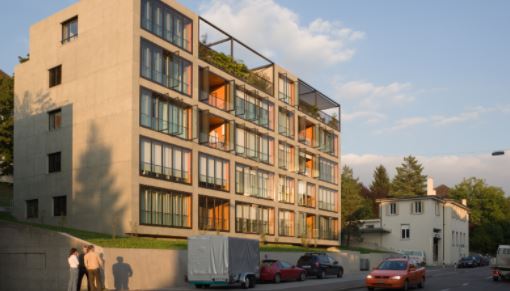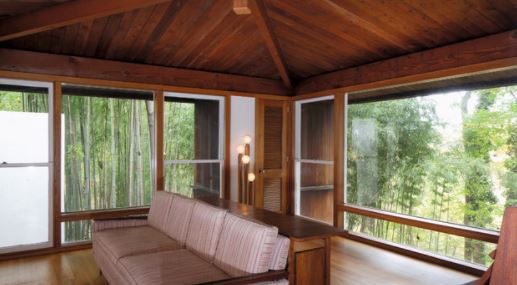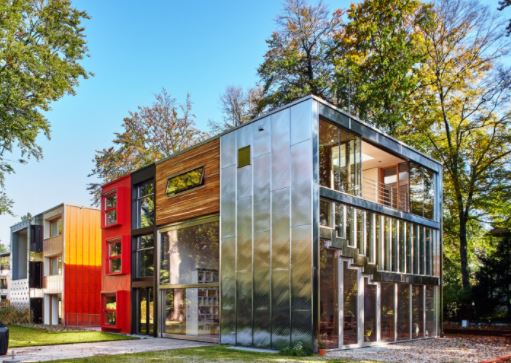
Preface
The construction of new buildings emits 48 megatons of carbon dioxide (CO 2) annually, which is equivalent to the net emissions of the entire Scottish country. The materials, transportation and construction of new buildings all require a lot of carbon. For example, cement is estimated to account for 8% of global CO2 emissions.
Existing buildings already contain significant CO2 emissions, which makes it even more important to upgrade and renovate (rather than demolish and rebuild) where possible. However, according to the current situation, the British tax system is actually imposing major financial penalties on renovations and encouraging the construction of new buildings.
There are three types of VAT rates for residential buildings: 20% for renovation costs, 0% for most new houses or apartments, and 5% for certain jobs, such as rebuilding long-term vacant houses or merging two properties into one.
Regardless of environmental factors, this difference in cost makes the market severely distorted investment in new construction. Although the rates vary across Europe, my own research has found similar differences.
Therefore, reforming the construction value-added tax rate will provide an easy opportunity to greatly reduce CO 2 emissions, avoid waste and encourage the improvement of the existing building stock-all of which can be done very simply. Because the transition period is short, it can make the development that has obtained financing or plan approval have continuity, so this reform can be implemented quickly, thus providing a powerful tool for accelerating sustainable low-carbon construction.

Simpler

First, the construction value-added tax rate for all residential buildings should be simplified: as experts have long demanded, all new or existing construction projects should have the same 5% tax rate. If the demolition of existing buildings is obviously less environmentally sustainable than refurbishing buildings, it will help fair competition, accelerate energy-saving improvements to existing houses, and reduce waste.
However, this alone is not enough. Although building regulations enforce minimum energy efficiency standards, there is currently a lack of incentives and many obstacles to the inability to use advanced sustainable building technologies and materials, enabling developers to reduce emissions during the construction process and to improve the life expectancy of the building Achieve better energy performance within.
For example, the main feature of the 2019 Stirling Prize winner Goldsmith Street social housing designed by the architect Mikhail Riches of the Norwich City Council is that it satisfies the recognized Passivhaus standards. The standard requires design to reduce the heat loss of the building, so that almost no heat is required. Strict design, quality control, supervision and testing are required to ensure that the reduced carbon dioxide emissions greatly exceed building regulations.

Better incentive mechanism

In related research, I suggest that the existing value-added tax rate for new residences can be redefined as 0% so that developers can only obtain economic rewards when they use low-carbon building technology to build energy-efficient buildings.
This can speed up the reduction of carbon dioxide emissions and help the UK fulfill its climate obligations, such as the Paris Agreement. Any cost to the government can be related to increasing the value-added tax of certain new buildings from 0% to 5%, reducing the avoidance of value-added tax (the current 20% tax rate drives the black economy), and reducing demand to create long-term economic benefits. match. Energy supply and material consumption.

Whether the industry standard should be changed

Industry standard measures (such as Passivhaus and BREEAM) already provide a way to verify and certify building quality. Measures to make construction waste reusable should also be considered.
For example, bricks laid with cement mortar can no longer be used, while using lime mortar means that they can be recycled as a whole. This may also include the use of recycled masonry, smithy, doors and linings, floors, fittings and windows-all of which were previously available in construction salvage. Therefore, new houses or refurbished houses that exceed the requirements of building regulations by further reducing CO 2 emissions will receive a 0% value-added tax rate after completion and certification in accordance with industry standards. For developers, the recoverable amount will become an incentive to reduce carbon dioxide, innovate and improve construction quality.
The reality of climate emergencies has been widely recognized throughout the construction industry, and the prospects of value-added tax reform have been widely recognized by institutions including the architect’s climate action network, the Australian historical environment, the Australian Town and Country Planning Association, and the Municipal Construction Association. stand by. Protect ancient buildings and the British Green Building Council. Reforming the building value-added tax so that all projects face the same 5% tax rate can quickly motivate people to switch to more sustainable low-carbon buildings without the burden of taxpayers. As Australia seeks to achieve net carbon neutrality by 2050, waiting is no longer an option.

